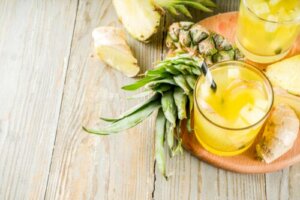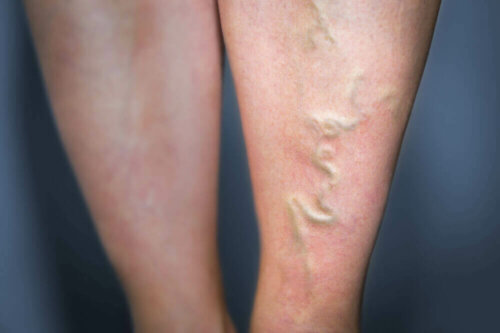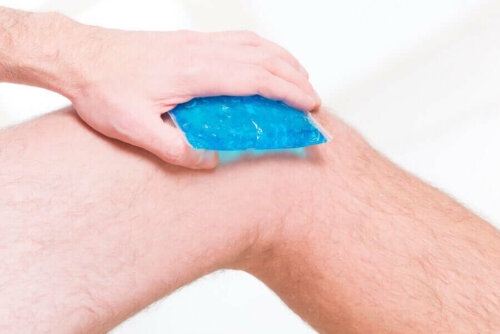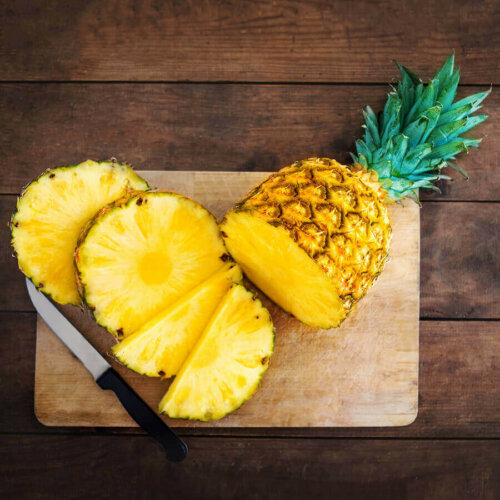Five Natural Solutions to Treat Phlebitis


Written and verified by Doctor Carlos Fabián Avila
Superficial phlebitis is a very common disease that, fortunately, can be treated. Therefore, those who are diagnosed with it can treat phlebitis and lead a normal and healthy life.
Of course, while following the treatment, you must keep good lifestyle habits. This means you should eat healthily, avoid excesses (including soft drinks) and exercise daily.
Now, you may be wondering: are there any natural solutions that can contribute to relief? Yes, and we’ll discuss them all in detail below.
What is phlebitis?
Phlebitis is a disease consisting of inflammation of a vein accompanied by blood clots on the vein wall. It frequently affects elderly people, although this doesn’t mean it can’t occur in people of other ages.

Experts at the Texas Heart Institute clarify that there are two types of phlebitis. The most common is superficial phlebitis, which involves swelling of a vein that’s close to the surface of the skin of the leg.
To understand this better:
- Superficial phlebitis: this is the most common and involves swelling of a vein near the surface of the skin, usually in the leg
- Deep phlebitis: swelling of the veins inside the leg is less common but more serious
However, we should talk about thrombophlebitis, which consists of venous inflammation accompanied by the formation of a thrombus (clot adhered to the wall). It isn’t usually serious if found on the superficial veins.
Thrombophlebitis is a complicated condition at the deep venous system level, as there’s a risk of clots moving to the rest of the body and clogging arteries in other territories with the consequent damage that this implies. This causes blood flow to be obstructed, tissues to die, and can even end the person’s life.
Learn to make these Five Alternative Treatments for Varicose Veins
Causes of phlebitis
Phlebitis is caused by blood clots that become inflamed in your veins. This, therefore, causes problems such as pain, numbness, a burning sensation, redness in your skin, and fever. When these symptoms are present, you must go to your doctor immediately to begin treatment.
The cause of phlebitis may vary. In many cases, genetic factors play an important role.
Having a sedentary lifestyle is another one of the causes since people who work many hours sitting down tend to develop this disease. This is due to the lack of circulation in your veins.
Having a thick buildup of toxins in your blood is also a cause of phlebitis. Blows, infections, or being overweight contribute also contribute to blocked veins.
How to prevent and treat phlebitis
- Maintaining a healthy weight
- Drinking a lot of water per day is very beneficial to your body since it keeps you hydrated
- A good and balanced diet is necessary. The Harvard plate and the Mediterranean diet can be good references.
- It’s recommended that you include more foods that improve your circulation like fiber and antioxidants
- Minimizing the consumption of junk food, industrial and ultra-processed food and beverages
- Foods that are high in trans fats, alcoholic beverages, and cigarettes can also cause damage to your body. Avoid consuming them to prevent this disease.
- This, in addition to a good workout routine of 30-40 minutes and walking after, reduces your risk and improves your circulation
Five natural solutions to treat phlebitis
Here are some natural solutions to treat phlebitis. Remember that these should complement a healthy lifestyle and the guidelines given to you by your doctor.
1. Cold or hot compresses

According to Dr. James D. Douketis, “Superficial venous thrombosis usually goes away on its own. Applying warm compresses and administering analgesics, such as aspirin (acetylsalicylic acid) or another nonsteroidal anti-inflammatory drug (NSAID) usually relieves the pain.”
If you have some compresses to alleviate headaches or muscle cramps at home, you can also use them to combat phlebitis. A hot bath can also help just as much to alleviate the symptoms.
- Put some gauze or cotton compresses in hot or cold water and apply them to the affected area to relieve inflammation
- Leave them on for at least 10 minutes
2. Arnica
Arnica is a flowering plant that has pain-relieving and anti-inflammatory properties. Therefore, it relieves discomfort. From it, you get an oil that’s believed to be very useful to treat phlebitis.
Note: Avoid applying it to your skin if you have any open wounds.
3. Ginkgo biloba tea
The high quantity of flavonoids and antioxidants that Ginkgo Biloba contains makes for a perfect solution to improve your blood circulation. It also prevents blood clots from forming.
- Steep the leaves or tea bags in hot water until it makes a tea, around 5 minutes
- Drink in the afternoon
- Avoiding drinking more than two cups a day
4. Horsetail tea
Horsetail tea is well known for its diuretic effect, which is ideal for eliminating retained fluids and obtaining relief when there’s swelling and general discomfort in the legs.
As it also helps to reduce swelling, it’s considered a suitable beverage to treat phlebitis and other blood circulation disorders.
- It’s recommended to drink two cups every day of this tea
- Take a hot and relaxing bath with the horsetail tea
5. Pineapple

Pineapples have an enzyme called bromelain that can decompose protein. Additionally, it’s proven to be a very successful natural anti-inflammatory agent. It’s also been used in postoperative treatments because, in addition to preventing inflammation, it reduces pain.
- Remove the peel from the pineapple and cut it into cubes
- Place them in a pot of boiling water and let them infuse for half an hour
- Eat it in moderation throughout the day
- You can also eat the fruit as a snack
Treat phlebitis by leading a healthy lifestyle
To treat phlebitis, it’s essential that, above all, you follow the instructions of your treating physician and surround yourself with good lifestyle habits.
Remember it isn’t advisable to base your well-being only on a drink, remedy or food, as this won’t provide significant benefits in the short or long term.
All cited sources were thoroughly reviewed by our team to ensure their quality, reliability, currency, and validity. The bibliography of this article was considered reliable and of academic or scientific accuracy.
- Dziwenka, M., & Coppock, R. W. (2016). Ginkgo biloba. In Nutraceuticals: Efficacy, Safety and Toxicity. https://doi.org/10.1016/B978-0-12-802147-7.00049-8
- Alves, R. S., Leite, N. S., & Fernandes, R. P. M. (2009). Estudos bioquímicos da enzima bromelina do Ananas comosus ( abacaxi ). Scientia Plena.
- Wright, C. I., Van-Buren, L., Kroner, C. I., & Koning, M. M. G. (2007). Herbal medicines as diuretics: A review of the scientific evidence. Journal of Ethnopharmacology. https://doi.org/10.1016/j.jep.2007.07.023
This text is provided for informational purposes only and does not replace consultation with a professional. If in doubt, consult your specialist.








